#artist is friedrich wilhelm theodor
Text

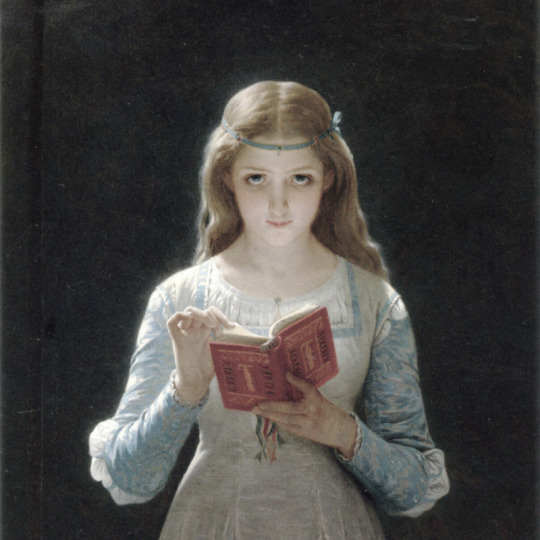
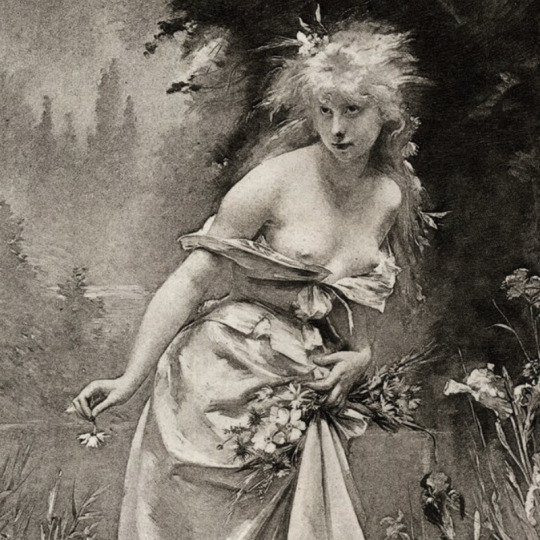



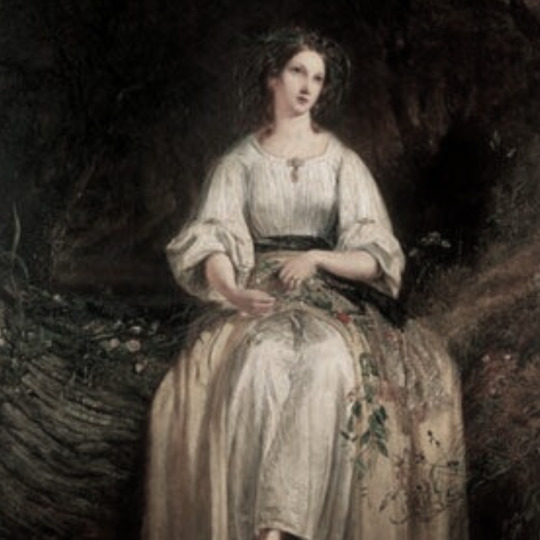


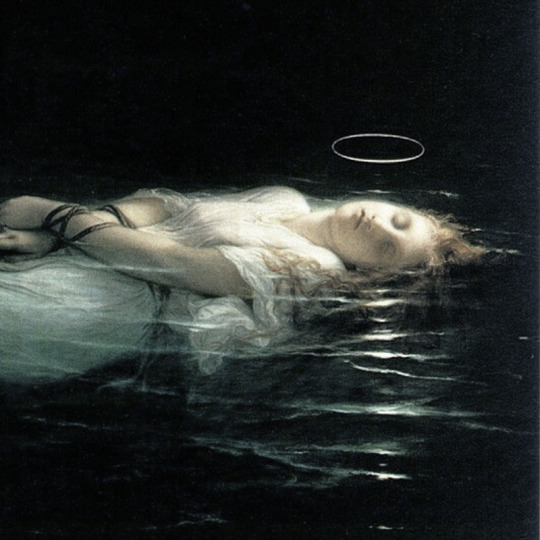
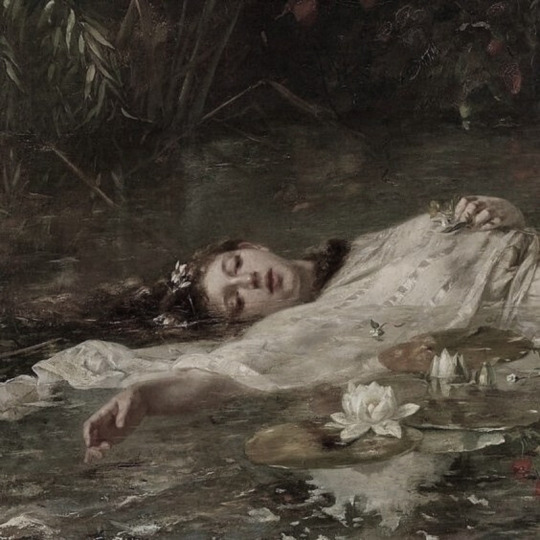

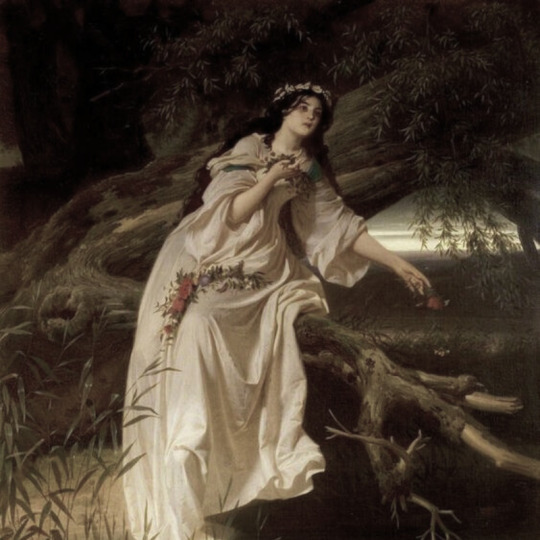
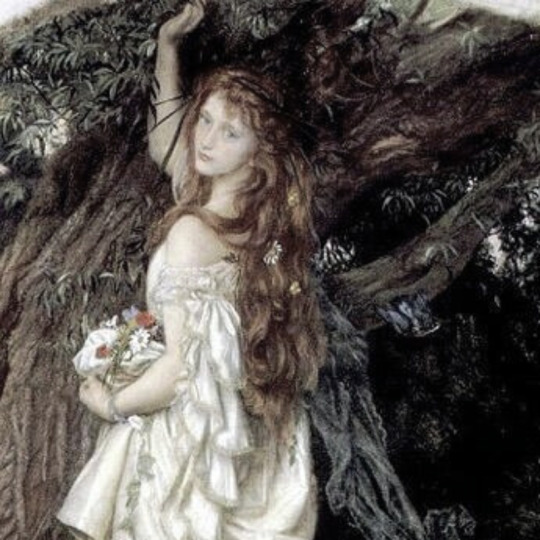
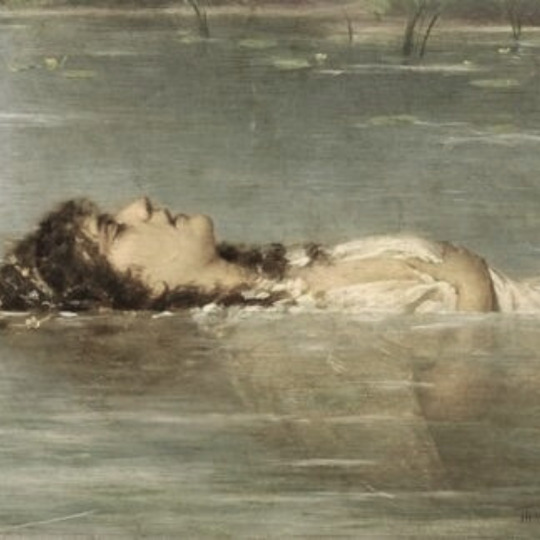
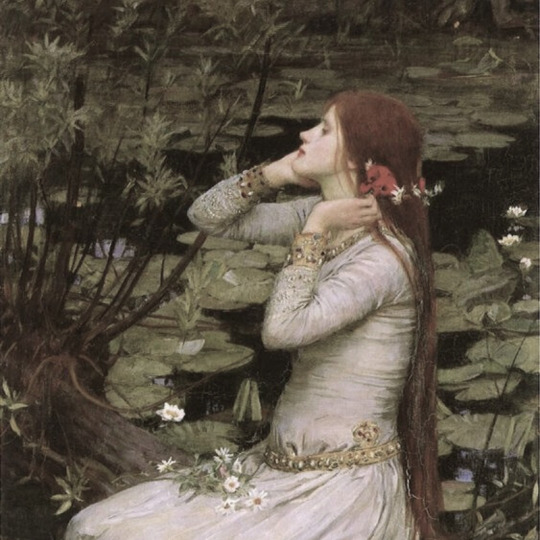

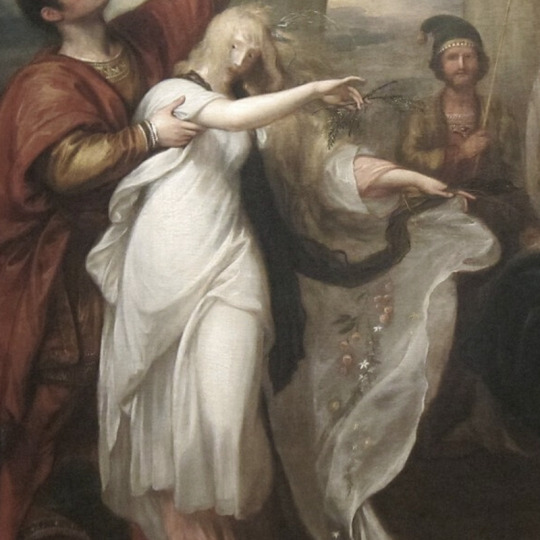



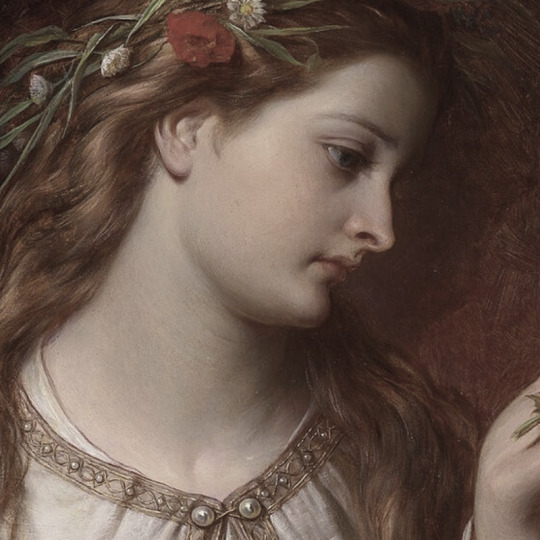
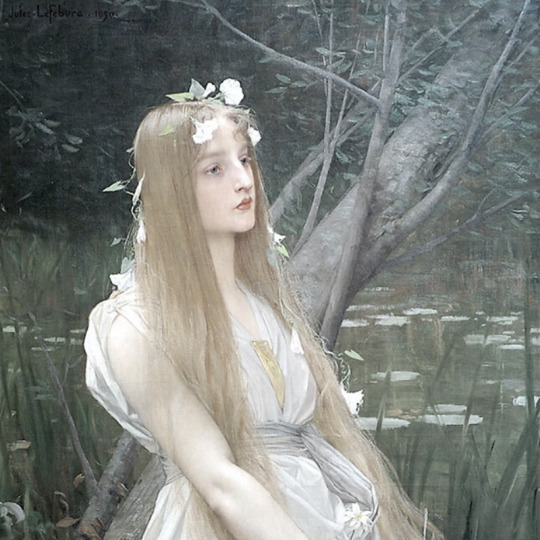
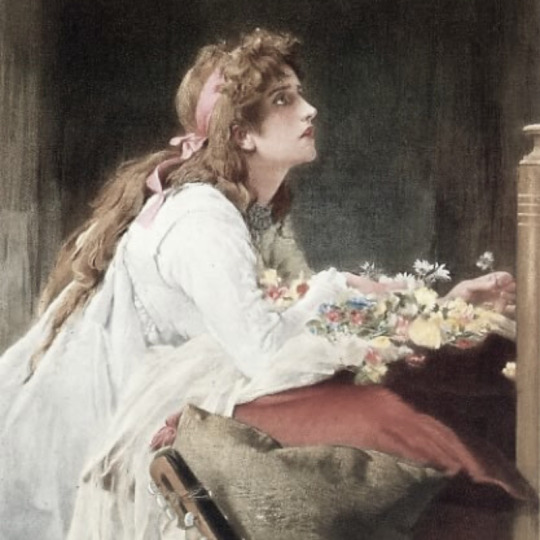

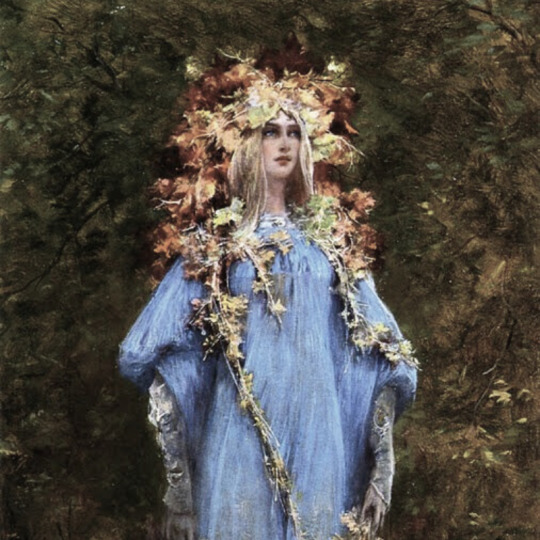
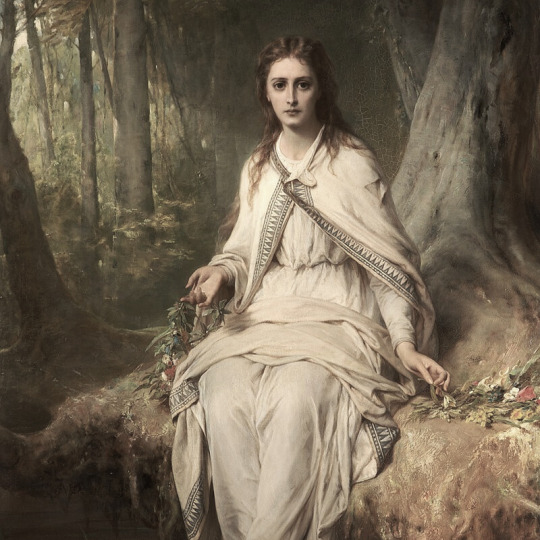
women in art: ophelia
#artist is john everett millais#artist is pierre auguste cot#artist is madeline lemaire#artist is sarah bernhardt#artist is paul albert steck#artist is salvaor dali#artist is richard redgrave#artist is constantin meunier#artist is jules bastien-lepage#artist is paul delaroche#artist is friedrich wilhelm theodor#artist is jeap-baptiste#artist is ferdinand piloty ii#artist is arthur hughes#artist is theodor von der beek#-artist is john william waterhouse#artist is leopold burthe#artist is benjamin west#artist is alexandre cabanel#artist is frances macdonald#--artist is arthur hughes#artist is thomas francis dicksee#artist is joseph jules lefebvre#artist is marcus stone#artist is konstantin makovsky#artist is georges clarin#artist is thomas francis dicksee-#art history#ophelia#hamlet
2K notes
·
View notes
Text

Life is demanding without understanding
#friedrich wilhelm theodor heyser#painter#friedrich heyser#German#Ophelia#artist#art#painting#champagnexowishes#love#girly#pretty#princess#style#luxury#fashion#classy#quote#lyrics
152 notes
·
View notes
Text

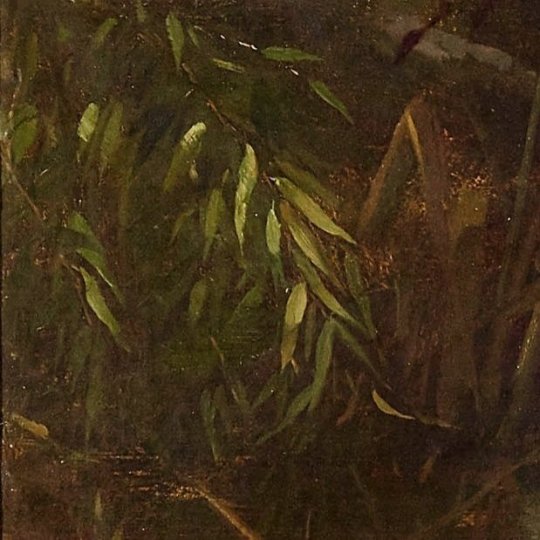

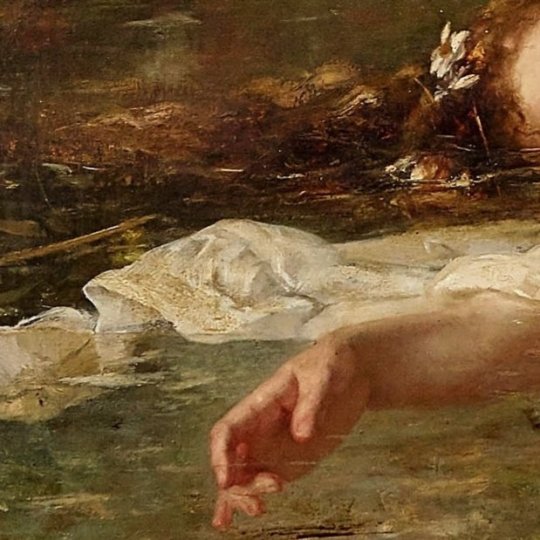
Art detail -
Ophelia (1921), by Friedrich Wilhelm Theodor Heyser
#art#art contemporain#artists on tumblr#classic#great master#paint#woman in art#art detail#details#painting#friedrich wilhelm theodor heyser#friedrich heyser#ophelia
46 notes
·
View notes
Text






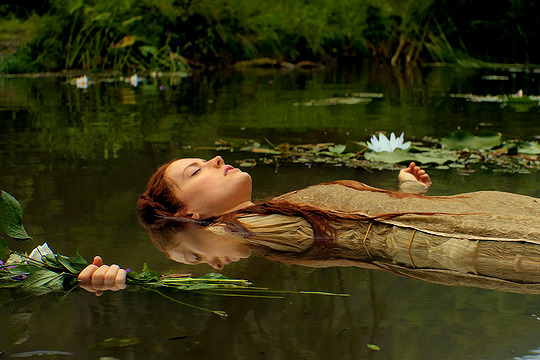



--
Natalie Merchant's 'Ophelia'
+ Mariah Gale (actress) / Friedrich Wilhelm Theodor Heyser (artist) / John Everett Millais (artist) / Daisy Ridley (actress) / Theodor von der Beek (artist)
#ophelia#hamlet#shakespeare#19th century art#preraphaelite#john everett millais#natalie merchant#art compilation#song lyrics
18 notes
·
View notes
Text
şskkdsanat
sanat websiteleri
- Prints and Photographs Online Catalog (https://www.loc.gov/pictures/search/?sp=1&co=prok&st=gallery)
- 60's aesthetic pop-culture museum (lileks.com)
- sanat (getty.edu)
- "Animation Obsessive" internet dergisi
minyatürler
- gallica (https://gallica.bnf.fr/ark:/12148/btv1b84559196/f1.planchecontact)(https://gallica.bnf.fr/ark:/12148/btv1b8427201w/f5.planchecontact#)
- (https://digitalcollections.nypl.org/collections/siyar-i-nab#/?tab=about)
- minyatürler (https://twitter.com/emretas1903/status/1256932238219976704?s=61&t=jW0iZotcW-bMoQ4g9_DI3A)
- Chester Beatty, minyatürler (https://viewer.cbl.ie/viewer/search/-/-/1/RANDOM/DC%3Aturkishcollection/)
- Morgan Library Museum (https://www.themorgan.org/collection/treasures-of-islamic-manuscript-painting/52)
- gallica (https://gallica.bnf.fr/ark:/12148/btv1b8427189w/f183.image)
arşivler
- •atasco de tiempo (r/art, r/arthistory, r/whatisthispainting)
- (medieval mondays)marinavia (u/marinavia) - Reddit
- smart art-art history escape
- (https://commons.wikimedia.org/wiki/User:Mattes/Studies/Bildlexikon_der_Kunst:Symbole_und_Allegorien)
- @solisolsoli
- (https://existential-anxiety.tumblr.com)
- u/SAKA_THE_GOAT
- Gata Magazine
- Ars Electronica
ressamlar
- Agnus Lamb (Konstantin Korobov)
- Albert Bettannier
- Albert Joseph Moore
- Albrecht Dürer hayvan ve doğa illüstrasyonları
- Aleksandr Nikolayev
- Alexei Savrasov
- Andrej Dugin, Olga Dugina
- Andrew Wyeth
- Anguissola (yüzler harika)
- Bartolomeo Veneto
- Belkis Ayón (Afro-Cuban artist, 1967-1999)
- Bill Mayer (black sun)
- Carl Spitzweg
- D Grubu (avant-garde türkiye)
- Ebrahel Lurci
- Edward Burne-Jones
- Egon Schiele
- Eyvind Earle (wow!!)
- Felicien Rops
- Fernand Khnopff harika!
- Frederick Varley
- Fyodor Bronnikov
- Gabriel Morcillo Raya
- George Inness (autumn)
- Georges Rochegrosse muazzam!
- gerardo dottori
- Gustav Klimt
- Gustave Doré
- Gustave-Claude-Etienne Courtois (dante virgil)
- H. R. Giger
- Hendrick Avercamp
- Hermann Wislicenus
- Holly Warburton
- Hossein Behzad
- Ivan Aivazovsky
- Ivan Seal
- Ivan Shishkin (en iyi hyperrealist manzara çizeri)
- J.C. Leyendecker
- Jakub Rozalski
- Jan Van Eyck (Ghent Altarpiece, (Closer to Van Eyck http://closertovaneyck.kikirpa.be)
- Jean Giraud
- Jean-Léon Gérôme
- Jean-Paul Laurens
- Jim Buckels
- Johfra Bosschart (The Adoration)
- John Brosio
- John glover
- John Heartfield: alman anti-faşist avant-garde sanatçı
- John Singer Sargent
- John William Godward
- John William Waterhouse
- Julius Kronberg (david and saul, cleopatra)
- Karl Wilhelm Diefenbach
- Konstantin Somov
- Logan Maxwell Hagege
- Luis Ricardo Falero (sabbath)
- Mariusz Lewandowski
- Mark Maggiori
- Markus Matthias Krüger
- Masha Kasha illüstrasyonları
- Odd Nerdrum (cat)
- Odilon Redon (the cyclops)
- Paolo Veronese
- Paul Laurenzi
- Pieter Bruegel the Elder
- Pietro Antonio
- Richard Dadd
- Roberto Ferri
- Serafín Avendaño
- Simeon Solomon
- Simon Stålenhag
- Theodor Kittelsen nokken
- Thomas Eakins
- Titus Kaphar
- Tomas Sanchez
- Utagawa Kuniyoshi olağanüstü bir sanatçı
- Vachagan Narazyan
- Vasily Vereshchagin (dervishes)
- Yuri Norstein animasyonları
- William Blake
- Zayasaikhan Sambuu (artzaya.com)
- Zdzisław Beksiński
- u/iartnewyork
Decadent Movement is the best
Situationist International
Aestheticism
tablolar
- 6 Stage of Dementia series
- 1375 Catalan Atlas HARİKA!!
- A Ride for Liberty (1862)
- Albrecht Dürer, The Men's Bath
- Allegory of Sculpture, 1889
- Allegorical Painting of Two Ladies, English School 17th century
- Altarpiece in Ascoli Piceno, Italy, by Carlo Crivelli (15th century)
- anguish(schenk)
- Anthropomorphic Allegory of Autumn by Lo Spadino
- Arnolfini Portrait
- Ascent of the Blessed
- Assumption of the Virgin (Botticini)
- Bashi-Bazouk (Gerome)
- Between gaps in memory
- Black Thursday (1851, William Strutt)
- Captives in Rome
- Caspar David Friedrich manzaraları
- Cats Fighting in a Larder (Paul de Vos) (Immodest, Henriëtte Ronner-Knip, 1897), (Mother's pride,Henriëtte Ronner-Knip ,1901), (The Piano Lesson ,Henriëtte Ronner-Knip,1897), (The little writer, Charles Van den Eycken , 1913)
- Cimabue's Celebrated Madonna
- Cleopatra Testing Poisons on Condemned Prisoners
- Dance to the Berdache. (celebrating the two-spirit, George Catlin 1796-1872)
- Death and the Grave Digger (La Mort et le Fossoyeur)
- Death of marat
- Decadent young woman
- Dervishes in festive outfits (Vasily Vereshchagin)
- Detroit Industry Murals (diego rivera)
- Diogenes, 1860 (Jean Leon Gerome)
- Doğu Asya Monark Tabloları (List of emperors of the Ming dynasty)
- El Greco, View of Toledo, 1598–99
- Family of Saltimbanques
- Federico Zuccaro vice(envy) painting
- Ferdinand Hodler, The Night, 1889–90
- Flaming June (Frederic Leighton)
- Four Horsemen of the Apocalypse, an 1887 painting by Viktor Vasnetsov
- Giulia Tofana painting
- Guernica
- Hacı Bektaş-ı Veli'nin hayvanlı tablosu
- Harem (Franz Hermann)
- Harold wayne nichols (windows on a death row)
- Isle of the Dead (1880, ARNOLD BÖCKLİN)
- Jalais Hill, Pontoise, 1867
- Jungle with Setting Sun
- Katsushika Ōi, Night Scene in the Yoshiwara, 1850
- Keith Perelli plant veins
- Kuzma Petrov-Vodkin (spring)
- Le déluge de Noe et les compagnons by Léon Comerre
- Les Oréades
- Light from the beginning of time (kenny callicutt)
- Man at the Crossroads
- Man Proposes, God Disposes (1864, Edwin Landseer)
- Melun Diptych!!!!! (jean fouquet)1452!
- Moroccan Girl, Playing a Stringed Instrument (Alexandre-Louis Leloir 1843-1884)
- Mothers (Jakub Rozalski)
- My bisexual wife
- Nero's Torches (1876)
- Nudes with Tortoise (Gyula Tornai)
- Nāve (Death) by Janis Rozentāls. 1897
- Old Man's Treasure (Karl Gussow)
- Orpheus Charming Wild Beasts With His Lyre
- Painting Breathes Life into Sculpture
- Painting of the 205 Nagasaki Martyrs
- Passing By, E. Martin Hemmings, 1924
- Peace and Tranquility on Mars (Jean-Michel Bihorel)
- Pierre Loti, 1910, Kunsthaus Zürich, Switzerland (henri rousseau)
- Plucking the Red and White Roses in the Old Temple Gardens
- Pygmalion and Galatea (gerome)
- Reading from Goethe's Werther, (Wilhelm Amberg Vorlesung aus Goethes Werther 1870)
- Reply of the Zaporozhian Cossacks
- Saint Augustine by Philippe de Champaigne
- Saint George and the Dragon (Antonio Cicognara)
- Slug by nagasawa rosetsu
- Splendor Solis. (cam içinde tavuskuşu)
- Stanislav Plutenko, Station of Forgotten Brides, 1961
- Summer Afternoon on a Lake, c. 1895
- Temptation of Saint Anthony by Robert Auer, 1917. Temptation of Saint Anthony in visual arts
- The Amazon Queen Thalestris (Johann Georg Platzer) (all art about amazons.)
- The Ambassadors (Holbein)
- The Battle of San Romano (Paolo Uccello)
- The Blind Girl (1856)
- The Blind Girl (1856, John Everett Millais)
- The Carpet Merchant (1882 Jean-Léon Gérôme)
- The Conference of the Birds
- The Death of Marat
- The Duel After the Masquerade
- The Flood of Noah and Companions (c. 1911, The Flood, Leon Comerre)
- The Garden of Death (1896)
- The Garden of Earthly Delights
- The general zapped an angel (1970, Karel Thole)
- The Great Bear, 1968 Rinat Voligamsi
- The Harvesters (1565)
- The Hesitant Fiance, Auguste Toulmouche, 1866
- The Hostage (1912), God Speed (Edmund Leighton)
- The Inferno (Giovanni da Modena)
- The Lament for Icarus (1898)
- The Lament for Icarus (Herbert James Draper)
- The Last Judgement (John Martin paintings) Manfred and the Alpine Witch (1837)
- The making of a perfect martini (guy buffet)
- The Mermaids, Drowned Maidens (1871, Rusalka, Ivan Kramskoi)
- The Snake Charmer
- The Swimming Hole
- The Problem We All Live With
- The Turkish Bath (Le Bain turc)
- The Ultimate Painting, by Drop Artists
- The wedding Dance by Bruegel
- The Worship of Trees (peggy collins)
- Turkestan Series
- Two Women by William Andrew Loomis
- Two Women by William Andrew Loomis (kisses)
- Vädersolstavlan, 1535
- çocuk kitaplarına pozitif komik karikatürler çizen dünyaca ünlü Dr. Seuss'un ölene dek herkesten gizlediği karanlık temalara sahip tabloları
heykel
- Apollo and Daphne (Bernini)
- Three graces with dicks
- Diana Efesina heykeli
- Francisco Asorey
- Dvorets Zemledel'tsev
- Ecstasy of Saint Teresa
- The Resurrection (Fazzini)
- Chairs by Tadashi Kawamata
- Germany burned books memorial
- Rear-front Memorial
- Monument à la Défense du Canal de Suez
- Khosrow I kabartması. Anushiruwan the Just statue in Tehran courthouse. Anushirawan the Just (justice statue) by Gholamreza Rahimzadeh Arjang. (1940)
- Wangechi Mutu
- Cementerio municipal de lujan
- Philip Jackson (philipjacksonsculptures.co.uk)
- La Danse (Carpeaux)
- Memorial to a marriage
- Angel of Death sculpture made of knives
- Hammer Statue in Oslo
- In the Chain of Consumption (2012, N.S. Harsha)
- Compianto sul Cristo morto (Niccolò dell'Arca)-particolare
- Testone heykelleri (Andrea Salvatori)
- Altar of the twelve gods
- Memorial to Those who Saved the World
- David (Michelangelo)
- Erotic Kama statues of Khajuraho
- Art Deco style statues
- Adoration of the Magi (Gentile da Fabriano)
- Gallos (sculpture)
mimari
- Church of St. Anthony of Padua, Istanbul
- Tomb of Mariam-uz-Zamani
- Cosmic Communist Constructions
- Dark Deco, Art Deco
- Etienne Louis Boullee
- Las Pozas
- Murcia Cathedral
- Reims Cathedral, Sainte-Chapelle, Gothic Architecture
- Soviet bus stops (book)
- Siena Cathedral
- Monument to the Battle of the Nations (türkiyeye böyle bir şey yapmak istiyorum)
- Art Deco Koruna Palace (prague) muhteşem
- Mazar-e-Quaid
- Pierre Cardin's Bubble Palace Near Cannes, Built 1975-89
diğer
- Cemetery flowers after the ice storm (peter fricke)
- Crystallized books by alexis arnold
- Tyler Thrasher Crystallized Cicadas
- Felix Semper
- Joos habraken (schroothoop bug art)
- Olivia Ackerman (olivias.atelier)
- Cutlery designed by Salvador Dali
- A Carved ivory barge (from Murshidabad, India)
- TwoFeltedFox felted animal replicas
- graphic design Renaissance in the beer industry (https://www.reddit.com/r/graphic_design/comments/b307zb/just_want_to_say_im_loving_the_graphic_design/) arizona cans
- Georges Rousse paintings
fotoğraf
- Tilt–shift photography
- Francesco Zizola
- Greg Girard (walled city)
- Wendy Carlos eclipse photos
- Station Squabble
- Les Femmes Du Maroc
- Yuni Yoshida
- Dorothea Lange
- Lapland Finland (Cuma Çevik)
- A.L. Schafer (Thou Shalt Not)
- Photographed irises
modern
- Dani Diez art
- notmusa art
- alba ballesta gonzález
- DEPPA🦷
- @ballstar1OO
- jon juarez
- @xe0_xeo
- Yun Ling
- @k0rvas
- The Beast of a Thousand Tales(@venommoe)
- Lizbeth tumblr art
- clarice tudor!!
- Wuheqilin. propaganda ama olağanüstü bir yetenek
- @k0rvas manzara tarzı
- "Another Life" by eunnieboo
- socially awkward maceracı
illustrasyonlar
- (simonleclerc.net)
- vampberry xx
- alphonse mucha
- LiquidSoulDesign GoT posters
- ah_to_hk
- Alberto Mielgo (albertomielgo.com)
- Miguel Covarrubias!
- banksy mother and anarchist son
- Dean Cornwell
- Livio Gonçalves
- Nekojisa
- Jon Juarez
- КРАСНЫЙ КОНЬ
- Murdering Airplane (max ernst)
- Matilda of Flanders (Herbest Norris)
- Satyricon tailhade rochegrosse
- fransisco goya'nın eşek otoportresi. "atam da böyleydi" goya kendi soyuna kafayı takmış ve soylu olduğuna inanmak istemiş. sonra olmadığını anlamış ve bu muazzam eseri çizmiş. goya olağanüstü ilginç bir karakter.
- Charles Donelan
- Rider–Waite Tarot
- sol' [Golden Kamuy] Asirpa
- Illustration from 1913 showing Pythagoras teaching a class of women
- u/Rojom
- Sascha Schneider
- Jean Giraud
- The Pleasantries of the Incredible Mulla Nasrudin
- @SWatercolour
- Drug John Miller
- The Third Reich (1934, Heinrich Vogeler)
- Reda Abdel Rahman
- sol' [Golden Kamuy] Asirpa
- giant birds demolishing armies
- Blame it on the Smoochbelly(trans dinosaur comic)
- art of steven universe (https://characterdesignreferences.com/art-of-animation-1/art-of-steven-universe)
- Rose O'Neill, "Signs", a cartoon for Puck, 1904.
- Crusades by Gustave Doré (also divine comedy)
- Muqam 1984 by Ghazi Ehmet
- Charles Rickets
- Leon Bakst /igor stravinsky(costume sketch)
- Étienne-Louis Boullée
- freedom shall prevail poster
- All the militias merged in the People's Army' — Republican poster from the Spanish Civil War, 1937.
- Anar-D
- Underground album cover (Thelonious Monk)
- A collection posters i've made throughout quarantine (https://www.reddit.com/r/graphic_design/comments/jkxv9s/a_collection_posters_ive_made_throughout/ (r/graphic_design, u/crazythewizard)
Illustrated Manuscripts
- The Court of Keyumars, Miniature by Sultan Muhammad from the Shahnameh of Shah Tahmasp)
- Jahangir Receives Prince Khurram at Ajmer on His Return from the Mewar Campaign
- Dervish with a lion and a tiger. Mughal painting.
- Samurai's Cat (Noguchi Tetsuya)
- Jesuits at Akbar's court
- The Dream of the Fisherman's Wife
- Weird Medieval Guys@WeirdMedieval
- Kunstformen der Nature (Ernst Haeckel biological illustrations)
- One Hundred Aspects of the Moon
- Portrait of Oh jaesun (by Yi Myeonggi)
- moon the nun (Martin Van Maele)
- Uemura Shoen
- Abdulcelil Levni
- AN OTTOMAN EROTIC MANUSCRIPT FROM THE 1790s
- Reza Abbasi, Mohd Qasim
- Zenana
- Bichitr
- Abu al-Hasan (1589 – c. 1630)
- takato yamamoto (modern)
- Khăzir mīndă ăzad!
- Manichaean Diagram of the Universe
- ritual of whirling dervishes at konya (https://www.meisterdrucke.uk/fine-art-prints/Ottoman-School/433357/Ritual-of-the-whirling-dervishes-at-Konya-.html)
- Tosa Mitsuoki
- Murasaki Shikibu composing Genji Monogatari
- Medieval Books of Hours (https://www.reddit.com/r/redscarepod/comments/17gyjfg/pages_from_medieval_books_of_hours/)
- animals (https://www.reddit.com/r/redscarepod/comments/15ud5wl/_/)
- Abanindranath Tagore
- An erotic Qajar lacquer Mirror-Case Persia, 19th Century (muhteşem gözüken minyatürler)
- Konrad Kyeser Bellifortis, black sheba
1 note
·
View note
Text
Birthdays 8.27
Beer Birthdays
Fred Bowman (1944)
Five Favorite Birthdays
Barbara Bach; actor (1947)
C.S. Forester; English writer (1899)
Georg Wilhelm Friedrich Hegel; German philosopher (1770)
Tarzan of the Apes; fictional character (1912)
Jeanette Winterson; English writer (1959)
Famous Birthdays
Patrick J. Adams; Canadian actor (1981)
Andreas Alföldi; Hungarian archaeologist and historian (1895)
Fernest Arceneaux; singer and accordion player (1940)
G.W. Bailey; actor (1944)
Gordon Bashford; English engineer, Range Rover co-creator (1916)
Tim Bogert; singer and bass player (1944)
Carl Bosch; German chemist (1874)
"Downtown" Julie Brown; V.J. (1959)
Sarah Chalke; actor (1976)
Alice Coltrane; pianist and composer (1937)
Jeff Cook; singer-songwriter and guitarist (1949)
Audrey C. Delsanti; French astronomer and biologist (1976)
Daryl "The Captain" Dragon; pop singer, songwriter (1942)
Theodore Dreiser; writer (1871)
Charles Fleischer; comedian and actor (1950)
Tom Ford; fashion designer (1961)
Chuck Girard; singer-songwriter and pianist (1943)
Samuel Goldwyn; film producer (1882)
Jeff Grubb; game designer and author (1957)
Johann Georg Hamann; German philosopher (1730)
Lyndon Baines Johnson; 36th U.S. President (1908)
Tony Kanal; British-American bass player and songwriter (1970)
Tom Lanoye; Belgian author, poet, and playwright (1958)
Ira Levin; writer (1929)
Alex Lifeson; Canadian singer-songwriter and guitarist (1953)
Norah Lofts; English author (1904)
Glen Matlock; English singer-songwriter and bass player (1956)
Katharine McCormick; biologist (1875)
John Mehler; drummer (1948)
Kenji Miyazawa; Japanese author and poet (1896)
Ann Murray; Irish soprano (1949)
Giuseppe Peano; Italian mathematician and philosopher (1858)
Kim Petras; German singer-songwriter (1992)
Jimmy Pop; singer-songwriter and guitarist (1972)
Norman Foster Ramsey Jr.; physicist (1915)
Man Ray; photographer, artist (1890)
Martha Ray; actor (1916)
Harry Reems; porn actor (1947)
Paul "Pee-Wee Herman" Reubens; actor, comedian (1952)
Robert Richardson; cinematographer (1955)
Tommy Sands; pop singer (1937)
Diana Scarwid; actress (1955)
Sonny Sharrock; guitarist (1940)
Reece Shearsmith; English actor, comedian and writer (1969)
Léon Theremin, Russian physicist, engineer, Theremin inventor (1896)
Kay Walsh; English actress and dancer (1911)
Tuesday Weld; actor (1943)
Chandra Wilson; actress (1969)
Lester Young; saxophonist and clarinet player (1909)
0 notes
Note
📋 artist(like Gogh, Klimt, Leonardo Da Vinci… you know)
Tbh as much as I like art, I don't really pay attention to artists like Leonardo Da Vinci unless I really need inspo for something. I know of them, I know that they were great artists and some other stuff, but I don't really care to look up stuff unless I have to?
I can't rank artists. But I do have a favorite painting as of right now!
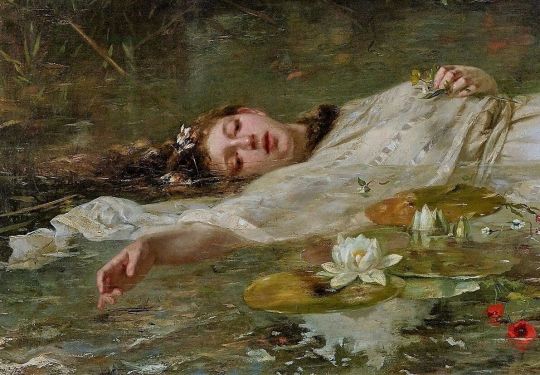
(Opehlia by Friedrich Wilhelm Theodor Heyser)
1 note
·
View note
Text

“Ophelia” by Friedrich Wilhelm Theodor Heyser
4 notes
·
View notes
Photo

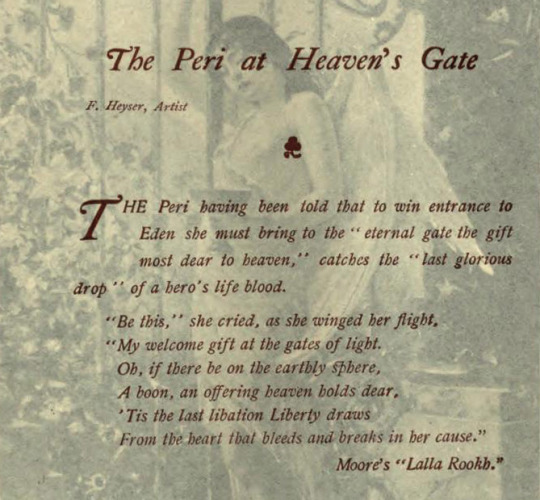
Friedrich Wilhelm Theodor Heyser (1857-1921), 'The Peri At Heaven's Gate', ''Character Sketches of Romance, Fiction and the Drama'' by Ebenezer Cobham Brewer, Vol. V, 1896
Source
#friedrich wilhelm theodor heyser#german artists#german painters#The Peri At Heaven's Gate#lalla rookh#thomas moore#Ebenezer Cobham#vintage art
198 notes
·
View notes
Photo
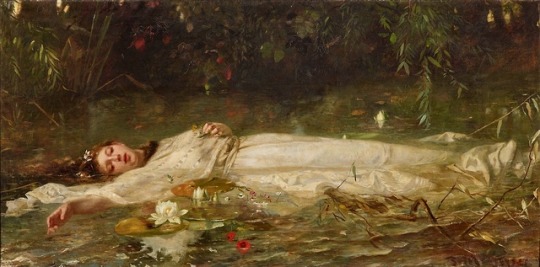
Friedrich Wilhelm Theodor Heyser, Ophelia
140 notes
·
View notes
Video
youtube
- English -
The imposing Benrath Palace is located in the south of Düsseldorf, twelve kilometers from the city's former gates and not far from the Rhine.
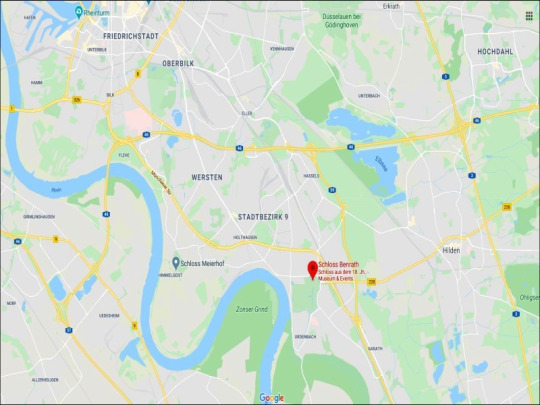
It´s one of the most beautiful garden castles of the 18th century and one of the most popular sights in Düsseldorf. The pink palace complex with its parks, gardens and facilities is one of the now rare magnificent buildings of the late Rococo.

Visitors can walk in the footsteps of the nobility on a guided tour of the palace, stroll in the artistically and picturesque gardens or visit the museums of garden art and natural history located there.

In 1755, at the behest of Elector Karl Theodor of Palatinate, a baroque palace in the Rococo and Classicist styles was built. Construction took 17 years, from 1756 to 1773.

The architect of the Maison de Plaisance with its spacious gardens was Nicolas de Pigage, the “Director of the Gardens and Water Arts” at the Mannheimer Hof. De Pigage created Benrath Palace from Jan Wellem's former moated castle as a "Maison de plaisance" based on the French model.
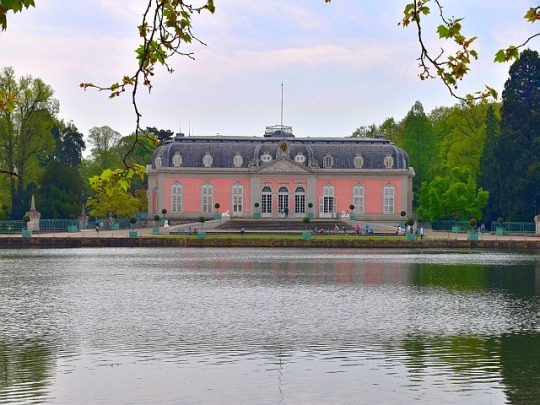
The effort to create an overall composition of architecture, garden art and sculpture is characteristic of the era of the late baroque at the transition to classicism. From the outside it appears to be one storey, but the castle has 80 rooms on four floors. The park grounds, which reflect the architecture of the castle, were later completed.

Big robes, nobles, mistresses, pleasure and festivities, that's what Schloss Benrath was created for. However, the elector visited his estate only once - in an afternoon.

After the Wars of Liberation, the hunting and pleasure palace passed into Prussian hands in 1815. Among others, used by Friedrich Wilhelm Ludwig of Prussia, Princess Luise, Karl Anton Fürst von Hohenzollern-Sigmaringen and by Kaiser Wilhelm I.
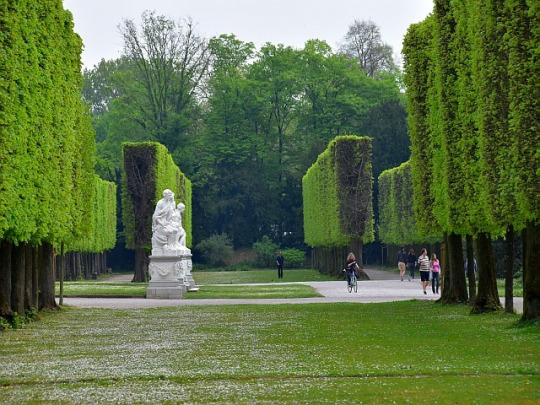
In 1911 the castle was bought by the municipality of Benrath and in 1929 it became the property of the city of Düsseldorf. Until 1958 the girls' school "Benrather Schloss-Lyzeum" was housed there.
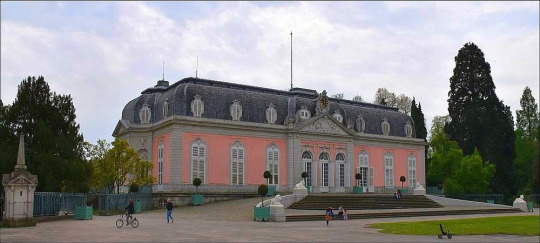
In the late 50s, a tourist attraction emerged from the castle, also due to various state visits there. Since 2000, the Benrath Palace and Park Foundation has taken over the management and use of the facility.

Films also used the “Maison de plaisance” as an impressive backdrop for their stories. During the past decades, the castle has also served as a venue for the novels “Effie Briest” by Theodor Fontane and “The Black Swan” by Thomas Mann.

The most popular park in North Rhine-Westphalia was the Benrather Schlosspark in 2013 by the WDR (West German Broadcasting). And admittedly, North Rhine-Westphalia has some beautiful parks to offer. But the green, floral estate with a total area of around 61 hectares impresses its visitors again and again.
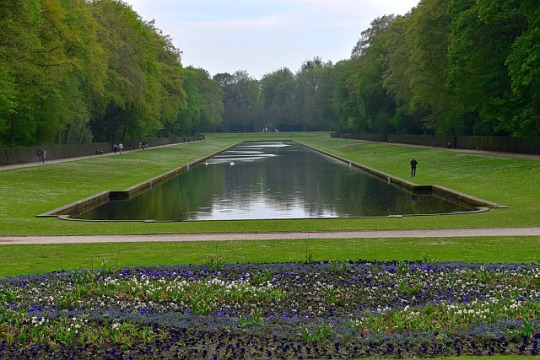
Nowadays a large part of the castle park is under monument and nature protection. The magnificent gardens, ponds and meadows now house almost 80 species of birds and 300 different kind of beetles.

On a approximately two-hour exploration tour through the park grounds, you will discover orchard meadows, walk through the hunting garden, explore the fruits of the vegetable gardens and be fascinated by the mirror pond, which is an impressive 470 meters long.
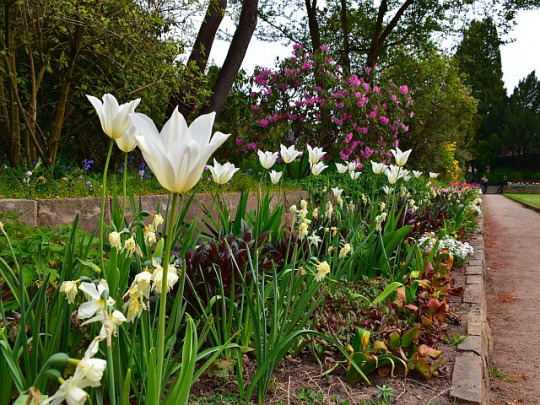
Rare North American copse characterize the so-called Elector's garden, which was created by outstanding garden artists such as Maximilian Friedrich Weyhe and Peter Joseph Lenné in the 19th century.

The park is freely accessible and admission is free.

There are also evening concerts in the idyllic castle park in summer - a particularly popular event is the classic open-air "Festival of Lights". A summer concert in the park at which all visitors have a picnic.

In any case, this is a special experience. People drag tables, chairs, candlesticks, lanterns, blankets, pillows etc. into the park and listen to classical music followed by fireworks and water-light plays.
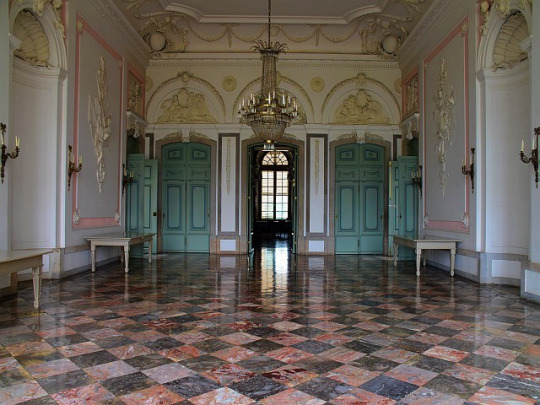
The castle itself can be visited on guided tours with different thematic priorities. Numerous historical furniture, porcelain and paintings are waiting to be admired!
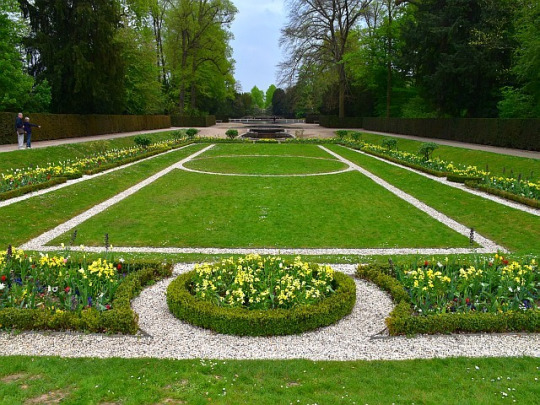
The Museum of European Garden Art is thematically unique and offers a good overview of 2500 years of garden art in Europe on around 2,000 square meters.

The Museum für Naturkunde shows the natural history of the Lower Rhine Bay and the Lower Bergisches Land. Here visitors can find out about changes in the course of the Rhine, fishing, fauna and flora.
3 notes
·
View notes
Photo
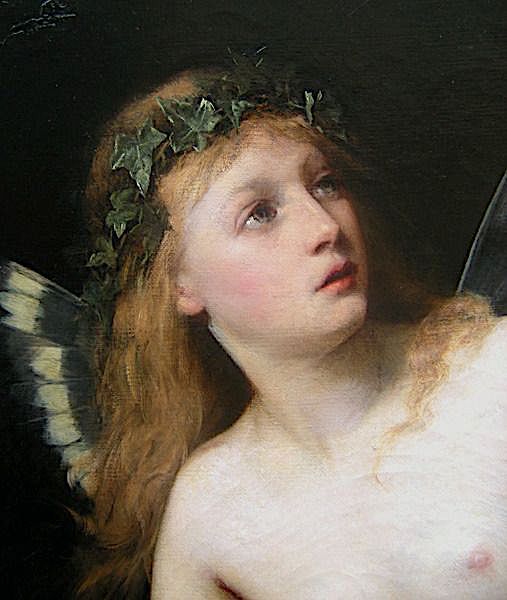

Wald-elfe (Forest-elf) or Nymphe by Friedrich Wilhelm Theodor Heyser (German artist, 1857-1921)
78 notes
·
View notes
Text
POPULATION
Abounaddara
Akinbode Akinbiyi
Nevin Aladağ
Danai Anesiadou
Andreas Angelidakis
Aristide Antonas
Rasheed Araeen
Ariuntugs Tserenpil
Michel Auder
Alexandra Bachzetsis
Nairy Baghramian
Sammy Baloji
Arben Basha
Rebecca Belmore
Sokol Beqiri
Roger Bernat
Bili Bidjocka
Ross Birrell
Llambi Blido
Nomin Bold
Pavel Brăila
Geta Brătescu
Miriam Cahn
María Magdalena Campos-Pons and Neil Leonard
Vija Celmins
Banu Cennetoğlu
Panos Charalambous
Nikhil Chopra
Ciudad Abierta
Marie Cool Fabio Balducci
Anna Daučíková
Moyra Davey
Yael Davids
Agnes Denes
Manthia Diawara
Beau Dick (1955–2017)
Maria Eichhorn
Hans Eijkelboom
Bonita Ely
Theo Eshetu
Aboubakar Fofana
Peter Friedl
Guillermo Galindo
Regina José Galindo
Israel Galván, Niño de Elche, and Pedro G. Romero
Daniel García Andújar
Pélagie Gbaguidi
Apostolos Georgiou
Yervant Gianikian and Angela Ricci Lucchi
Gauri Gill
Marina Gioti
Beatriz González
Douglas Gordon
Hans Haacke
Constantinos Hadzinikolaou
Irena Haiduk
Ganesh Haloi
Anna Halprin
Dale Harding
David Harding
Maria Hassabi
Edi Hila
Susan Hiller
Hiwa K
Olaf Holzapfel
Gordon Hookey
iQhiya
Sanja Iveković
Amar Kanwar
Romuald Karmakar
Andreas Ragnar Kassapis
Kettly Noël
Bouchra Khalili
Khvay Samnang
Daniel Knorr
Katalin Ladik
Lala Rukh (1948–2017)
David Lamelas
Rick Lowe
Alvin Lucier
Ibrahim Mahama
Narimane Mari
Mata Aho Collective
Mattin
Jonas Mekas
Angela Melitopoulos
Phia Ménard
Lala Meredith-Vula
Gernot Minke
Marta Minujín
Naeem Mohaiemen
Hasan Nallbani
Joar Nango
Rosalind Nashashibi and Nashashibi/Skaer
Negros Tou Moria
Otobong Nkanga
Emeka Ogboh
Olu Oguibe
Rainer Oldendorf
Pauline Oliveros (1932–2016)
Joaquín Orellana Mejía
Christos Papoulias
Véréna Paravel and Lucien Castaing-Taylor
Benjamin Patterson (1934–2016)
Dan Peterman
Angelo Plessas
Nathan Pohio
Pope.L
Postcommodity
Prinz Gholam
R. H. Quaytman
Gerhard Richter
Abel Rodríguez
Tracey Rose
Roee Rosen
Arin Rungjang
Ben Russell
Georgia Sagri
Máret Ánne Sara
Ashley Hans Scheirl
Marilou Schultz
David Schutter
Algirdas Šeškus
Nilima Sheikh
Ahlam Shibli
Zef Shoshi
Mounira Al Solh
Annie Sprinkle and Beth Stephens
Eva Stefani
K. G. Subramanyan (1924–2016)
Vivian Suter
El Hadji Sy
Sámi Artist Group (Keviselie/Hans Ragnar Mathisen, Britta Marakatt-Labba, Synnøve Persen)
Terre Thaemlitz
Piotr Uklański
Jakob Ullmann
Antonio Vega Macotela
Cecilia Vicuña
Annie Vigier & Franck Apertet (les gens d’Uterpan)
Wang Bing
Lois Weinberger
Stanley Whitney
Elisabeth Wild
Ruth Wolf-Rehfeldt
Ulrich Wüst
Zafos Xagoraris
Sergio Zevallos
Mary Zygouri
Artur Żmijewski
Zainul Abedin (1914–1976)
Stephen Antonakos (1926–2013)
Arseny Avraamov (1886–1944)
Ernst Barlach (1870–1938)
Étienne Baudet (ca. 1638–1711)
Samuel Beckett (1906–1989)
Franz Boas (1858–1942)
Arnold Bode (1900–1977)
Lorenza Böttner (1959–1994)
Marcel Broodthaers (1924–1976)
Lucius Burckhardt (1925–2003)
Abdurrahim Buza (1905–1986)
Vlassis Caniaris (1928–2011)
Sotir Capo (1934–2012)
Cornelius Cardew (1936–1981)
Ulises Carrión (1941–1989)
Agim Çavdarbasha (1944–1999)
Chittaprosad (1915–1978)
Jani Christou (1926–1970)
Chryssa (1933–2013)
André du Colombier (1952–2003)
Gustave Courbet (1819–1877)
Christopher D’Arcangelo (1955–1979)
Bia Davou (1932–1996)
Maya Deren (1917–1961)
Ioannis Despotopoulos (1903–1992)
Thomas Dick (1877–1927)
Carl Friedrich Echtermeier (1845–1910)
Maria Ender (1897–1942)
Forough Farrokhzad (1935–1967)
Conrad Felixmüller (1897–1977)
Pavel Filonov (1883–1941)
Niccolò di Pietro Gerini (1340–1414)
Tomislav Gotovac (1937–2010)
Jacob and Wilhelm Grimm (1785–1863, 1786–1859)
Ludwig Emil Grimm (1790–1863)
Giovanni di ser Giovanni Guidi (1406–1486)
Cornelia Gurlitt (1890–1919)
Louis Gurlitt (1812–1897)
Nikos Hadjikyriakos-Ghika (1906–1994)
Oskar Hansen (1922–2005)
Sedje Hémon (1923–2011)
Theodor Heuss (1884–1963)
Karl Hofer (1878–1955)
Ralph Hotere (1931–2013)
Albert Jaern (1893–1949)
Iver Jåks (1932–2007)
Sunil Janah (1918–2012)
Alexander Kalderach (1880–1965)
Tshibumba Kanda Matulu (1947–1981 disappeared)
Leo von Klenze (1784–1864)
Kel Kodheli (1918–2006)
Louis Kolitz (1845–1914)
Spiro Kristo (1936–2011)
KSYME-CMRC (founded 1979)
Anna “Asja” Lācis (1891–1979)
Maria Lai (1919–2013)
Yves Laloy (1920–1999)
Valery Pavlovich Lamakh (1925–1978)
George Lappas (1950–2016)
Karl Leyhausen (1899–1931)
Max Liebermann (1847–1935)
George Maciunas (1931–1978)
Ernest Mancoba (1904–2002)
Oscar Masotta (1930–1979)
Mikhail Matyushin (1861–1934)
Pandi Mele (1939–2015)
Tina Modotti (1896–1942)
Benode Behari Mukherjee (1904–1980)
Krzysztof Niemczyk (1938–1994)
Ivan Peries (1921–1988)
David Perlov (1930–2003)
André Pierre (1915–2005)
Dimitris Pikionis (1887–1968)
Dmitri Prigov (1940–2007)
Hasan Reçi (1914–1980)
W. Richter
Anne Charlotte Robertson (1949–2012)
Erna Rosenstein (1913–2004)
August Wilhelm and Friedrich Schlegel (1767–1845, 1772–1829)
Bruno Schulz (1892–1942)
Scratch Orchestra (1969–1974)
Tom Seidmann-Freud (1892–1930)
Allan Sekula (1951–2013)
Baldugiin Sharav (1869–1939)
Amrita Sher-Gil (1913–1941)
Vadim Sidur (1924–1986)
August Spies (1855–1887)
Foto Stamo (1916–1989)
Gani Strazimiri (1915–1993)
Władysław Strzemiński (1893–1952)
Alina Szapocznikow (1926–1973)
Yannis Tsarouchis (1910–1989)
Antonio Vidal (1928–2013)
Albert Weisgerber (1878–1915)
Lionel Wendt (1900–1944)
Johann Joachim Winckelmann (1717–1768)
Fritz Winter (1905–1976)
Basil Wright (1907–1987)
Andrzej Wróblewski (1927–1957)
Ivan Wyschnegradsky (1893–1979)
Iannis Xenakis (1922–2001)
Androniqi Zengo Antoniu (1913–2000)
Pierre Zucca (1943–1995)
Documenta14, 2017
9 notes
·
View notes
Text
Neues Rathaus, Architecture, Construction and Concept
Neues Rathaus, The New Town Hall is one of the most popular architectural designs in Bavaria. Its location in Munich is towards the northern part of the famous Marienplatz square. The hall hosts notable events such as council meetings and musical concerts.
Neues Rathaus is a rich detailed architectonical work, and you will have the best of time touring this great showplace. However, before you visit, there are many things you should know about Neues Rathaus.
Neues Rathaus Construction
Prior to the construction of Neues Rathaus, there was an Old Town Hall known as Altes Rathaus. Inadequate space in the Old Town Hall led to the construction of Neues Rathaus. After the decision to build a new town hall, Marienplatz was elected as the proper construction site.
Georg Hauberrisser supervised the design of the first building. The construction took place between 1867 and 1874. There was a need for subsequent expansion since the building could not contain the administration at that time. To get enough space for this new building, the administration had to buy properties around Dienerstrasse and Weinstrasse regions.
Georg Hauberrisser also designed Rathaus expansion in 1887. The latest design incorporated four complexes. This occupied the whole North side of the Marienplatz. Further constructions after this were the erection of a new tower, keystone construction, and repairs after World War II.
For the construction of Neues Rathaus, Georg Hauberrisser got his inspiration from the famous Brussel’s Rathausturm. Jan van Ruysbrieck, a belgium architect, was the mastermind of this design in 1449.
Building Concepts
Neues Rathaus contains construction material such as stones and bricks. The tower is one of the masterpieces of this building. Its height is about 85 meters; you can get there with the elevator designed to meet modern standards. Reaching the top is a complete fun, and tourists look forward to this. From there, you can enjoy magnificent sights of the Marienplatz and a great view of the whole of Munich city.
Before getting to the top, there is the 3rd floor of the building. This is the most important part of the Neues Rathaus. It has a very spacious area where most of the important events take place. Third-floor is also one of the most attractive parts of the building. The walls are adorned with beautiful designs and the original canvas of famous Munich artist, Carl Theodore Pilotis.
There is also another room in the building designated for the display of artworks. This room looks like a mini-museum. It has top-notch designs with art carvings and gems all around.
The second floor of the building is where you will find the Neues Rathaus library. It is a very big library with numerous book sections. Like every other part of the town hall, the library is well designed with quality materials.
Rathaus Glockenspiel Clock
This could arguably be the most interesting and famous feature of the Neues Rathaus. Located on the main building’s tower, the Rathaus Glockenspiel is a distinct feature of Neues Rathaus reconstruction.
People gather around the Neues Rathaus to watch the play performance of the clock every day. The Rathaus Glockenspiel display twice a day when it chimes at 11 am and 12 pm. These stories are ancestral tales from past centuries. Rathaus Glockenspiel has more than 40 bells and over 30 human-sized figures used for this display.
There are 2 halves of Rathaus Glockenspiel, each half its own story. The upper half displays a friendly battle in honor of the famous marriage of Duke Wilhelm V and Renata von Lothringen. There are 2 team battle knights of the human-size figures.. The first team with blue and white colors represent the Bavaria Knights. The second team in red and white colors represents the (bad guys) Lothringen Knights. At the end of the battle, the Bavarian knights are usually victorious.
The second chime commences the second display in the bottom half of Rathaus Glockenspiel. The story is about the traditional coopers’ dance in Munich. The dance is a culture that has been practiced for generations in Munich. The dance started as a result of a plague that affected the people of cooper from 1515 to 1517. Due to this, they invented this dance to help take their minds off fears from the plague. They believed that dancing helped them through this difficult period. Since then, they have performed it every seven years in the city of Munich. The next one is in 2026.
Each of these shows last a period of 12 to 15 minutes based on the sound scheduled for that particular day. To bring the show to an end, a large cock at the top of the Rathaus Glockenspiel would crow thrice.
Rathaus Glockenspiel Construction
Again, Georg Hauberrisser is the brain behind the design of Rathaus Glockenspiel. In fact, the idea of incorporating a clock into the Neues Rathaus building was his.
Karl Rosipal's first donation is for the first set of human-size figures to play performance. However, there is more to this. The administration decided that they do not want to have the participation of a Jewish man in the construction of the Rathaus Glockenspiel. Unfortunately because of the Jewish descendants, Karl's donation is being refunded to his family in 1934.
During World War II, Rathaus Glockenspiel got small damage. Hence, it's usage got casually in the ensuing years. During those periods, it underwent necessary repairs to bring it back to a better state.
The next repairs of the Rathaus Glockenspiel took place in 2007 prior to Munich’s 850th anniversary. They got rid of the bells and human-sized symbols, cleaned, and the bad ones got recovery. Also, other parts of the clock like the bell holder, springs and steels got new looks. This maintenance cost about 750,00 Euros, of which 650,000 Euros is donation from Munich’s citizens.. The German Foundation for Monument Protection (Deutsche Stiftung Denkmalschutz) gave the additional 100,000 Euros.
For the summer Olympics in 1972, the clock chimed at 12 pm and 5 pm instead of the normal time of 11 am and 12 pm.
The Night Watchman and The Guardian Angel
Another common tradition of the Neues Rathaus is the watchman. At night around 9 pm, a beam of light shines on the 2 sided window. The watchman always roams the left side. Dressed in a loose garment, he usually carries his lamp and horn.
In this period, Rathaus Glockenspiel plays some nice tunes. The first one is from the award-winning movie Die Meistersinger von Nuremberg. He then wraps it up with the lullaby song of Johannes Brahms. After this, the guardian angel returns to the tower, and then it’s time for light out in the Neues Rathaus. This is how the city of Munich is being put to bed by the New Town Hall every night.
The Rathaus Glockenspiel Gallery
Above the huge clock is the Rathausturm gallery which you can access with the lift. The gallery’s sight is astonishing, especially on a bright sunny day. Some of the beautiful views to enjoy include the Holy Spirit Church, the Talburtor, the whole of Marienplatz, St. Paul’s church, etc.
The Town Hall Facade
Town Hall St. Johann, the town hall facade, is a striking resemblance of the Neues Rathaus. Georg Hauberrisser is also responsible for the architectural design of the Town Hall Facade.
Since there was only 1 design for Town Hall St. Johann, it has a more balanced look than the Neues Rathaus whose construction spanned 3 periods. Hauberrisser combined various sections of buildings, with different heights, for the town hall facade. He made use of facade claddings and designs extension to come about this.
People are comparing the works from Hauberrisser with the ones from Friedrich von Schmidt, who is his teacher. Friedrich von Schmidt built Viennese Town Hall as well as its facade. Hauberrisser usage of various decorations, features, balconies, and claddings gave his designs more life and made them look intriguing.
His works were also linked to those of Zentralblatt der Bauverwaltung in Berlin. His creativity and how he designed the Town Halls to fit the city of Munich looked similar to the works of Zentralblatt der Bauverwaltung.
Neues Rathaus Reconstruction after WWII and the American Contribution
Neues Rathaus suffered damages during the airstrikes of World War II. After the war, there was a need for a rebuilding process. During this period, an additional floor rose upon the Neues Rathaus. Before the end of the 90s, the rebuilding process was fully completed with the help of American donations.
The windows design contains motifs from religion, cultural, international and regional background. Although these got torn apart towards the end of World War II, they were all restored during the reconstruction process.
Monuments in the Neues Rathaus
Neues Rathaus buildings statues are made from mainly bricks and limestone. Built on a landmass area of 9159 meters square, the whole building covers about 77% of this land area. The free areas are well decorated to meet the taste of the Neues Rathaus.
There are various monuments in the Neues Rathaus. Just in the middle of 2 complexes in the Marienplatz, there is a statue illustration of Prince Regent. Other monuments include those of the four earliest kings and founders Munich, a water fountain, and many other historical illustrations.
More Features of the Neues Rathaus
The rooms in the new town hall are 400. Behind the main building that faces the Marienplatz is a park known as Marienhof. Here, the basement is home to the famous Ratskeller restaurant. The restaurant is always busy with tourists trooping in and out every day.
The last floor has a lot of rooms rented out as shops to petty traders. This is where you can get your goods as a tourist. Also, this floor houses the visitor center office where you can make various tourist inquiries.
On the first floor, is probably the largest balcony you have ever seen. This place hosts elaborate events like concerts, award presentations, etc.
Events in Neues Rathaus
The Neues Rathaus hosts most of Munich’s major events. There are various rooms for this purpose. There is a conference room for events like the city council. The hall also houses various fragments of the city’s administration and also the Mayor’s office.
The Mayor’s office location is underneath the Rathaus Glockenspiel. Looking at the huge clock from this position is a very beautiful sight.
The town hall is also hosts musical concerts, award ceremonies, various kinds of receptions and sports team meetings.
Do you want more?
So there you have it. You are definitely in for a fun time in the Neues Rathaus. It is such a huge place, so you have to schedule the tour carefully. Don’t worry about that, with me you would have the best tour possible.
Finally, don’t forget to bring your cameras along, you can take amazing pictures here!
Related articles
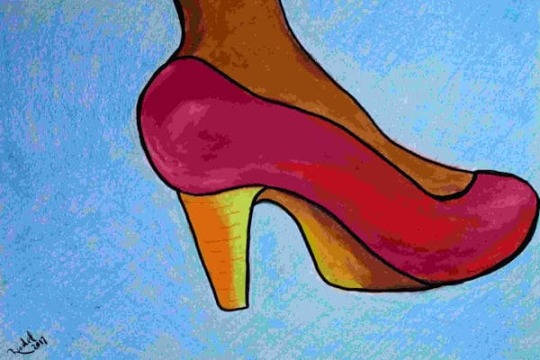
City tour in German
Paul's Beer and Food Event
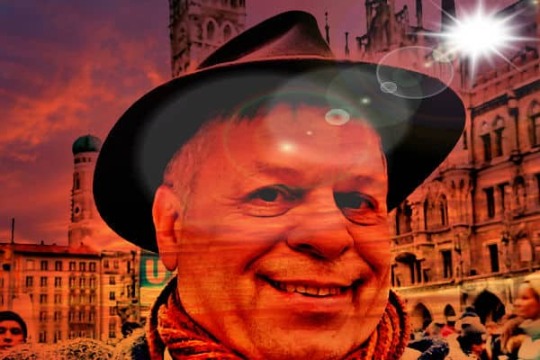
Walking Tour with Paul

Visit the Ratskeller
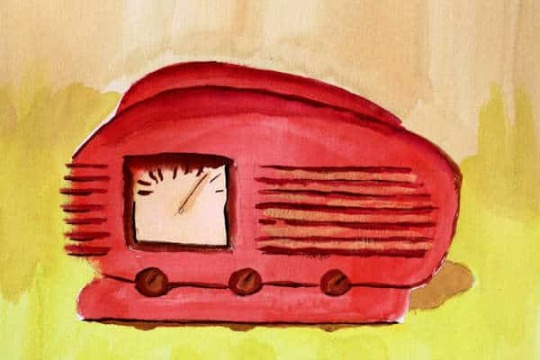
Visit Donisl
Read the full article
0 notes
Photo


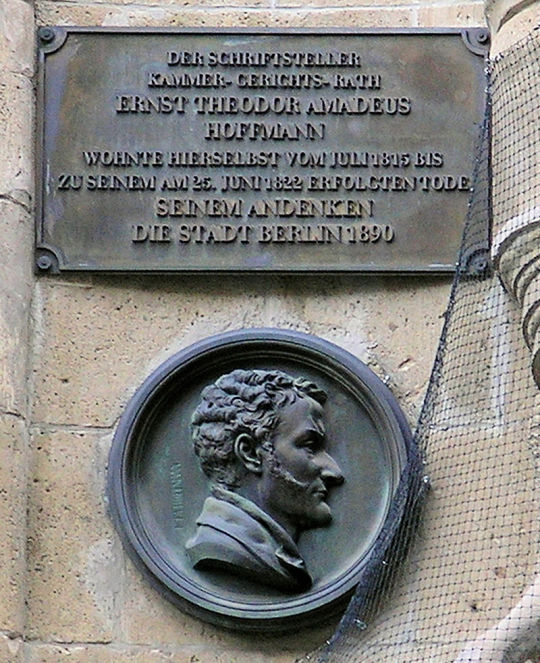
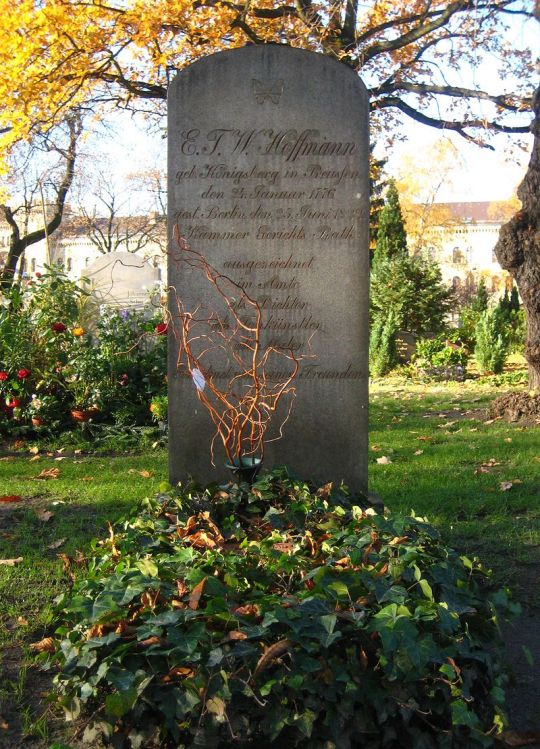
Ernst Theodor Amadeus Hoffmann
Ernst Theodor Amadeus Hoffmann né Ernst Theodor Wilhelm Hoffmannc le 24 janvier 1776 à Königsberg, en Prusse-Orientale, et mort le 25 juin 1822 à Berlin (à l'âge de 46 ans), est un écrivain romantique et un compositeur, également dessinateur et juriste allemand.
Juriste de formation, Hoffmann sert dans l'administration prussienne de 1796 à 1806, puis de 1814 à sa mort. Également dessinateur et peintre, son indépendance d'esprit et son goût de la satire lui valent à plusieurs reprises de sérieux ennuis auprès de ses supérieurs hiérarchiques, qu'il n'hésite pas à caricaturer.
C'est surtout en raison de son activité littéraire que Hoffmann est célèbre. Connu sous le nom d'« E. T. A. Hoffmann », il est l'auteur de nombreux contes (Märchen en allemand) comme : L'Homme au sable, Les Mines de Falun ou Casse-Noisette et le Roi des souris et de plusieurs romans, dont son œuvre principale Le Chat Murr. Il devient alors, dès les années 1820, l'une des illustres figures du romantisme allemand et il inspire de nombreux artistes, en Europe comme dans le reste du monde. Par exemple, Jacques Offenbach écrit l'opéra fantastique en cinq actes Les Contes d'Hoffmann en s'inspirant de l'univers du romantique allemand.
Également passionné de musique, il abandonne son troisième prénom, « Wilhelm », pour celui d'« Amadeus » en hommage à Mozart, son modèle, et devient critique musical, puis compositeur. Il est ainsi l'auteur de plusieurs opéras, en particulier Ondine, qui est tiré d'un conte de son ami Friedrich de La Motte-Fouqué, ainsi que d'œuvres vocales et instrumentales.
Œuvres principales
Casse-Noisette et le Roi des souris (1816)
L'Homme au sable (1817)
Le Chat Murr (1819-1821)
Les Frères de Saint-Sérapion (1819-1821)
Princesse Brambilla (1820)
https://fr.wikipedia.org/wiki/Ernst_Theodor_Amadeus_Hoffmann
Contes mystérieux (Hoffmann)/Casse-Noisette et le Roi des souris
https://fr.wikisource.org/wiki/Contes_myst%C3%A9rieux_(Hoffmann)
https://fr.wikisource.org/wiki/Contes_myst%C3%A9rieux_(Hoffmann)/Casse-Noisette_et_le_Roi_des_souris
0 notes
Text
Tonight I’m going to talk a little about the Iffland ring, because it’s kind of cool, was considered cursed at one point, might be entirely a fake tradition created by the fifth bearer, and could easily inspire a story or two amongst the creative types.

It’s a ring with a cameo of August Wilhelm Iffland a German actor and dramatist one of the finest actors in the German language of his time, and that’s important to remember because Germany as a country didn’t exist at that time there were a bunch of smaller countries that spoke German. Anyway in a bolt of inspiration he decided to craft the ring that would be passed upon his death to the actor he considered the "most significant and most worthy actor of the German-speaking theatre" who would then do the same. So he passed it on to one Ludwig Devrient in 1814, Ludwig was close friends with E.T.A. Hoffmann whose work was adapted into the opera The Tales of Hoffmann and after Hoffmann died Ludwig become something of a drunk and died on stage performing King Lear. The next two holders were Berlin based and didn’t leave much of an imprint Ludwig’s nephew Emil and Theodor Doring.
The fifth holder was Friedrich Haase, a vain bugger who happily played up rumours that he was the illegitimate offspring of royalty, he travelled and performed around the world. He also may have invented the whole thing to enhance his reputation as the history of the ring is detailed in a letter he wrote to his successor Albert Basserman.

Albert performed in theatre, silent film and films with sound, his last film appearance was The Red Shoes. In 1933 he fled Germany, the Nazis liked his work and told him he could continue to act if he divorced his Jewish wife, he refused and wound up in America along with some other fine German artists. He outlived all three of the actors he selected coming to believe it cursed he placed it upon the coffin of the third but the ring was saved by Herman Robbeling who declared it belonged to a living actor not a dead one. Basserman refused to name a fourth heir so the responsibility fell to Egon Hilbert who wanted to name Werner Krauss the new bearer. Krauss refused until the actor’s guild named him a second time.
Krauss wanted to pass the ring onto a woman, Alma Seidler but the ring had to be passed to a dude apparently so it went to Josef Meinrad after Krauss also died on stage performing King Lear. After Seidler’s death a woman’s version of the Iffland ring was created in her honour. Meinrad named Bruno Ganz as his heir and everyone on the internet knows Bruno because his performance as Hitler in Downfall was turned into a meme, damn fine actor also who turned in a solid performance in Werner Herzog’s Nosferatu and a fantastic one in Wim Wender’s Wings of Desire. Sadly Bruno died a few years ago and the current bearer is Jens Harzer. So there you go an interesting bit of trivia about a tradition amongst German speaking actors.
0 notes